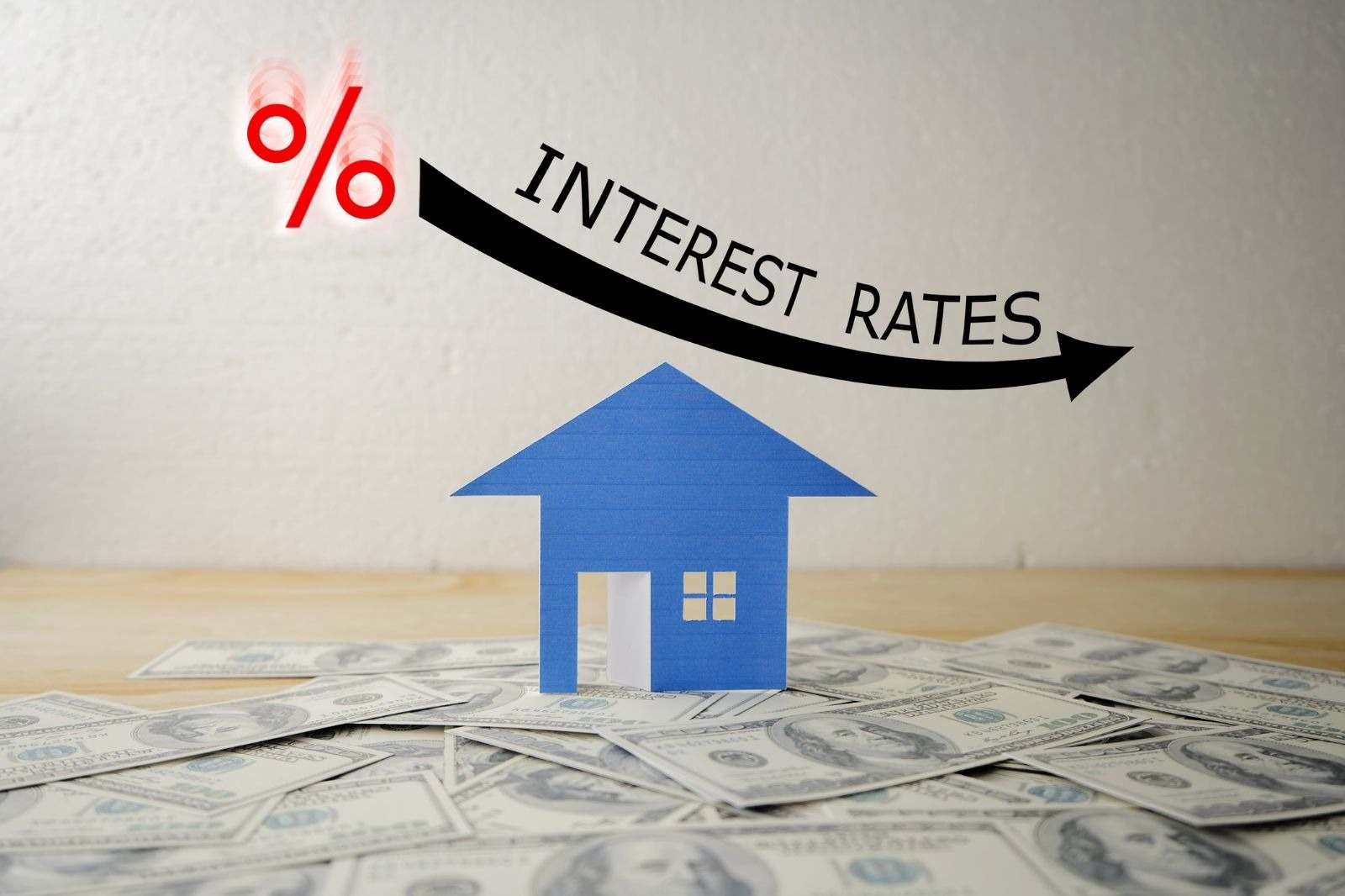Most of the headlines around the One Big Beautiful Bill (OBBB) have focused on politics. For investors in Texas, the real impact is far more concrete: OBBB introduces new real estate tax advantages that directly shape how portfolios generate returns.
With expanded bonus depreciation, broader property improvement deductions, and more favorable capital gains treatment, the bill creates immediate tax benefits of real estate investing while also strengthening long-term performance. For new investors, this means lower entry barriers and earlier positive cash flow. For accredited investors, it opens the door to portfolio-wide optimization and reinvestment opportunities.
These changes arrive at the right time for Texas. The state’s population passed 30 million in 2023, driven by migration from higher-cost regions. Job growth in energy, technology, and medical sectors continues to fuel resilient rental demand. With these fundamentals already in place, the OBBB tax benefits on residential real estate provide an even stronger foundation for long-term growth.
At Elysium Real Estate Investments, we view policy through one lens: investor ROI. The OBBB tax benefits residential real estate measures stand out as some of the most impactful in recent memory, magnifying returns in high-growth Texas markets where demand and appreciation trends are already strong.
What’s Actually Changing?
The OBBB provisions affect three critical areas for Texas investors: taxation, financing, and regulation. While all three matter, the tax changes stand out as the single biggest driver of returns under OBBB.
Tax Changes

- Bonus Depreciation – Investors can now write off 100% of qualifying improvements in the first year. Under prior rules, these costs had to be depreciated over 27.5 years. For example, $40,000 in HVAC and roofing upgrades would have yielded about $1,450 in annual deductions under the old model. Now, the entire $40,000 can be deducted in year one, creating immediate real estate investment tax benefits and freeing capital for reinvestment. In Houston’s older neighborhoods or San Antonio’s historic districts, this provision has a direct, tangible impact on cash flow.
- Expanded Property Improvement Deductions – A wider range of projects, from HVAC systems to energy retrofits, now qualify for accelerated cost recovery. In cities like Austin and Dallas, where tenants expect modern amenities, these deductions shorten payback periods and create stronger tax benefits of investment property. For example, a San Antonio four-plex owner could deduct new insulation and solar upgrades in the first year, lowering taxable income while also raising rental appeal.
- Capital Gains Treatment – Properties held for at least three years now qualify for more favorable tax rates. For accredited investors, this provision rewards strategic holds in appreciation corridors such as Austin’s tech hub or Houston’s Energy Corridor. This improves exit timing and supports long-term residential real estate tax benefits.
Financing Changes

- Interest Rate Incentives – OBBB introduces below-market borrowing options, cutting debt service and freeing up cash to fund deductible improvements. For context, elevated interest rates since 2022 have made it harder for investors to scale in competitive markets. OBBB-backed financing changes that dynamic, making it easier to align debt structures with cash flow targets.
- Extended Loan Terms – New 30-year structures with refinancing flexibility provide stability, allowing investors to better align financing with renovation timelines and exit strategies.
- Expanded Credit Access – Broader underwriting standards open the door to more participants. First-time buyers in San Antonio or Corpus Christi, for example, can now secure financing and access the same tax benefits of real estate investing previously limited to more established players.
Regulatory Changes

- Faster Permitting – Shortened review windows reduce holding costs and bring projects to market sooner. In Austin, permitting that once took close to a year can now be completed in six to seven months.
- Zoning Flexibility – Expanded allowances for mixed-use and higher-density development create new opportunities in Dallas infill corridors and coastal areas around Corpus Christi.
- Aligned Incentives – Local governments are increasingly pairing city-level abatements with OBBB provisions, multiplying the OBBB impact on Texas investment and creating stronger redevelopment economics.
How This Benefits Your Portfolio

Here’s how the numbers look. The OBBB’s tax, financing, and regulatory updates are already reshaping cash flow models for investors across Texas.
Case Example: $400,000 Rental Property in Houston
| Metric | Before OBBB | After OBBB |
|---|---|---|
| Annual Tax Savings | ~$3,500 with standard depreciation | ~$7,600 with bonus depreciation & expanded deductions |
| Loan Terms | 6.5% fixed, 20-year amortization | 5.3% fixed, 30-year amortization with refinancing flexibility |
| Permitting Timeline | 9–12 months | 6–7 months |
| Year 1 ROI | ~7.4% | ~10.1% |
Note: This example assumes a mid-range investor tax bracket (24%) and standard financing terms. Actual results will vary based on property details, financing structure, and tax position
What the Numbers Show
- Stronger Cash Flow – Immediate deductions deliver direct tax benefits of real estate investing, reducing taxable income and improving first-year ROI.
- Financing Advantage – Lower rates and extended amortization ease monthly debt obligations, creating room to reinvest in deductible improvements.
- Faster Execution – Shorter permitting cycles allow investors to realize real estate tax advantages earlier, reducing the drag of idle capital.
- Portfolio-Level Upside – For accredited investors, applying bonus depreciation and deductions across multiple holdings compounds into significant OBBB tax benefits for residential real estate outcomes. For a portfolio of 10 similar properties, the difference could exceed $40,000 in additional deductions in the first year alone.
Action Steps to Adapt

At Elysium Real Estate Investments, we recommend a structured, advisory approach to help investors capture the full impact of OBBB tax advantages for Texas real estate.
- Audit Properties for Eligible Improvements
Our advisors can help identify upgrades such as HVAC, roofing, or energy retrofits that qualify for bonus depreciation. In markets like Houston and San Antonio, where older housing stock is common, these improvements deliver immediate residential real estate tax benefits while boosting rental appeal. - Strategize Renovations Around the Tax Calendar
Rather than scheduling upgrades randomly, we work with clients to align renovations with tax-year deadlines. This ensures maximum deductions and, for portfolio owners, creates consistent cash flow by staggering improvements across multiple properties. - Evaluate Refinancing Opportunities
Our team reviews existing loans and identifies OBBB-supported financing options that reduce monthly obligations and unlock capital. This frees resources for improvements that generate further tax benefits of investment property. - Direct Savings Into High-Demand Markets
We guide investors toward metros where policy incentives and rental demand overlap. Austin and Dallas reward larger renovations with higher rents, while Corpus Christi and San Antonio offer lower entry costs and stable returns. Targeting the right mix amplifies the OBBB impact on Texas investment portfolios.? - Plan Exits Around the Three-Year Rule
With favorable capital gains treatment applying after three years, we help clients map out hold periods and stagger exits to balance reinvestment and long-term tax advantages. For accredited investors, this strategy compounds portfolio efficiency year after year.
Other Potential Impacts

Beyond immediate tax, financing, and regulatory changes, OBBB is expected to create secondary effects that shape Texas real estate markets over the next decade. For investors, these trends expand the scope of available opportunities and reinforce the long-term tax benefits of real estate investing.
- Infrastructure Expansion
Federal and state dollars tied to OBBB are accelerating highway improvements around Dallas–Fort Worth and expanding port facilities in Houston and Corpus Christi. These projects increase accessibility, support job growth, and strengthen rental demand in surrounding submarkets — positioning investors to capture both appreciation and ongoing real estate investment tax benefits. - Stacked Development Incentives
Cities are beginning to align OBBB provisions with local abatements and incentive programs. In San Antonio, downtown redevelopment zones are becoming more attractive as federal and municipal benefits overlap. This creates stronger economics for mixed-use and workforce housing while extending the reach of OBBB tax benefits residential real estate. - Workforce Housing and Energy Efficiency Programs
Targeted OBBB funding supports affordable housing and energy upgrades. For investors, this means reduced operating costs, more stable tenant bases, and potential eligibility for supplemental incentives — all of which reinforce the long-term real estate tax advantages of holding and improving property. When paired with the tax benefits of investment property, these initiatives improve both short-term cash flow and portfolio resilience.
Together, these dynamics define the OBBB impact on Texas investment 2025, particularly as infrastructure and incentive stacking compress project timelines.
Conclusion: Turning Policy Into Strategy
The OBBB has redefined how investors should approach Texas real estate. Its most powerful feature is clear: expanded residential real estate tax benefits that improve cash flow, reduce holding risk, and create stronger after-tax returns.
For new investors, the legislation lowers entry barriers through bonus depreciation and broader deductions — delivering immediate OBBB tax benefits residential real estate owners can apply from day one. For accredited investors, the opportunity lies in scale: applying accelerated depreciation and favorable capital gains treatment across multiple holdings compounds into portfolio-wide gains. Together, these provisions represent some of the most significant OBBB tax advantages for Texas real estate in recent memory.
For both new and accredited investors, the OBBB tax advantages for Texas real estate are the clearest pathway to stronger after-tax returns.
At Elysium Real Estate Investments, we help clients apply these updates with precision. Our team builds tailored strategies around the tax benefits of investment property, aligning acquisitions, renovations, financing, and exits with the provisions that create the strongest long-term results. By focusing on market fundamentals and leveraging policy shifts, we turn legislative change into measurable ROI.
Download the OBBB Texas Investment Strategy Checklist
Get the step-by-step guide to cut costs, maximize tax savings, and move faster in Texas markets
Schedule Your OBBB Strategy Consultation
Work directly with Elysium’s advisors to apply OBBB provisions to your portfolio. We’ll model potential returns, identify opportunities, and create a customized plan for 2025 and beyond















